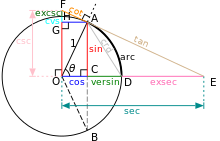The cerebral cortex is a big sheet of neurons about 2 millimeters thick with a surface area of about four 8.5 x 11 pages of paper. Under this thin sheet of gray matter (neuron bodies) lies all of the white matter that creates the connections between neurons. The physical characteristics of neurons differ a little throughout the sheet but the main differences - that determine what the neurons process – are found in the inputs. Inputs from the sense organs and other brain areas feed into the cortex in a distributed way. I believe, that if you want to know, in general, what a small patch of cortex does, the best way to do this is to look at the inputs that feed into it. Particular areas of cortex are programmed by not only the nearest input, but other nearby inputs. These inputs probably work together, triangulate or overlap like circles in a Venn diagram, to determine the relevant functional properties of nearby cortical tissue.
Input from the retina feeds right into cortex in the back of the brain and this is why occipital cortical areas there process visual stimuli. Up near the top of the head, in the somatosensory strip, are inputs from sensors on the skin. This strip of cortex is thus responsible for processing touch information from all over the body. But what about half-way in between these two areas? What is processed in the space between visual and tactile? The parietal cortex sits in between these two areas and its main function seems to be almost a split between visual and somatosensory processing. The parietal cortex is responsible for our mental representations of personal space, the areas right around our body. Could it be that the function of parietal cortex is determined by a combination of its nearest inputs? I think so. As another example, consider the temporal lobe which receives inputs directly from the cochlea of the ear. As you might guess much of the temporal lobe is involved in identifying the source of heard sounds. Guess what the area intermediate between visual and auditory cortex is involved in? It is involved in the recognition of conceptual objects, normally things that both have visual forms and make audible sounds.
In more complex areas you have several inputs, very close to each other, coming from sensory organs, other cortical areas and also neuromodulatory systems that release transmitters like dopamine, serotonin and adrenaline. This gets very complicated, very quickly, but I have a strong hunch that the unique connectional trigonometry of patches of cortex determines what kinds of things their neurons are exposed to and how they "perceive" the world. Many diagrams that I have seen in neuroscience display the inputs and outputs associated with different areas but contain no information about the spatial orientation of these inputs relative to each other. For many reasons, I think that the spatial configuration of cortical inputs is very important and will be instrumental in determining function in different cortical areas - especially those with multiple, multimodal, overlapping inputs such as the prefrontal cortex.

No comments:
Post a Comment